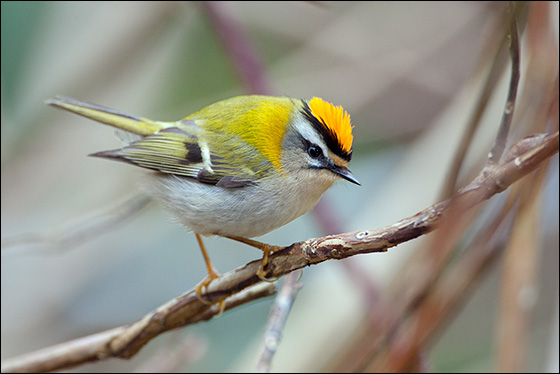Firecrest (Regulus ignicapilla)
The Firecrest is as small as the Goldcrest and is clearly very closely related to it, but the two species can coexist because of their subtly different ecological requirements. So, whereas the Goldcrest is essentially arboreal and drawn to conifers (in experiments where they were offered a choice of beech or spruce for foraging, they spent 93% in the latter), the Firecrest often feeds at lower levels over a less restricted range of habitats, including both coniferous and mixed woodland (in experiments it sought out beech for 57% of its foraging and spruce for 43%). In addition, the Firecrest takes larger food items on average than the Goldcrest and forages with less fastidiousness, changing perch more frequently.
The Firecrest is also a less hardy bird than the Goldcrest, being found mainly in Central and Southern Europe and not occurring in Scandinavia. In the north and east of its range it is primarily migratory, whereas southern birds are resident. Overall, the indomitable Goldcrest has a much broader world range than the Firecrest, being found as far east as China, while the latter is almost confined to Europe.
The Firecrest is also a less hardy bird than the Goldcrest, being found mainly in Central and Southern Europe and not occurring in Scandinavia. In the north and east of its range it is primarily migratory, whereas southern birds are resident. Overall, the indomitable Goldcrest has a much broader world range than the Firecrest, being found as far east as China, while the latter is almost confined to Europe.
There are some interesting behavioural differences between the two species. The nest of a Firecrest, for example, is built only by the female, not by both sexes, and is it somewhat smaller than the Goldcrest’s substantial structure. It is often sited in ivy or other creepers, as well as sometimes high up in a conifer. And when Firecrests are displaying, they don’t nod like a Goldcrest to show off the crown. Instead, presenting their stripy heads as their most prominent feature, they simply look straight towards each other.

